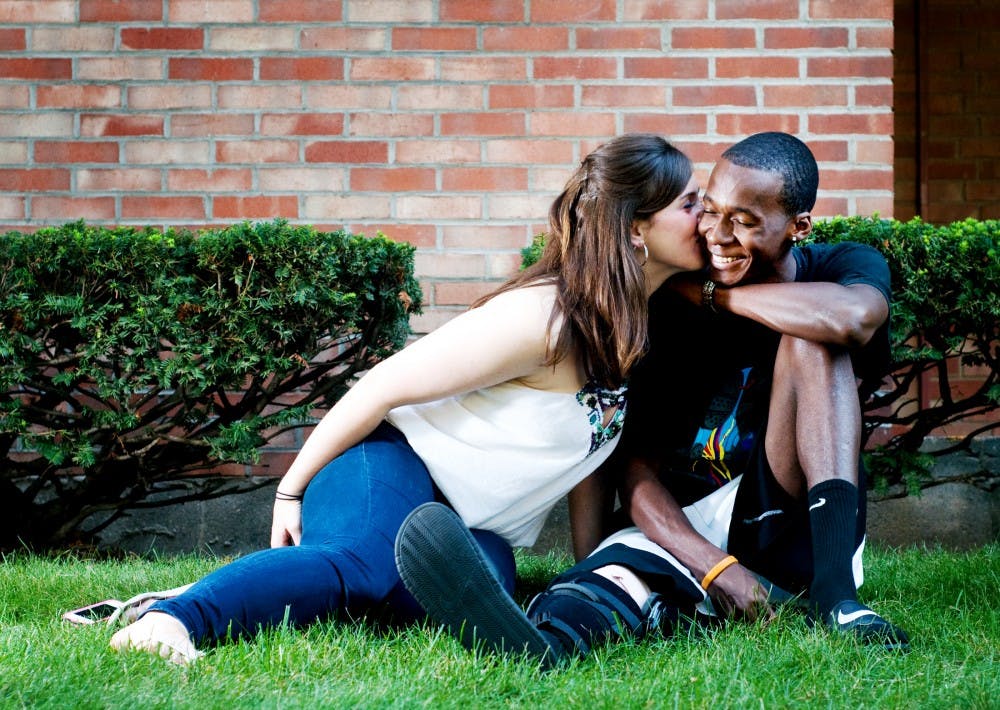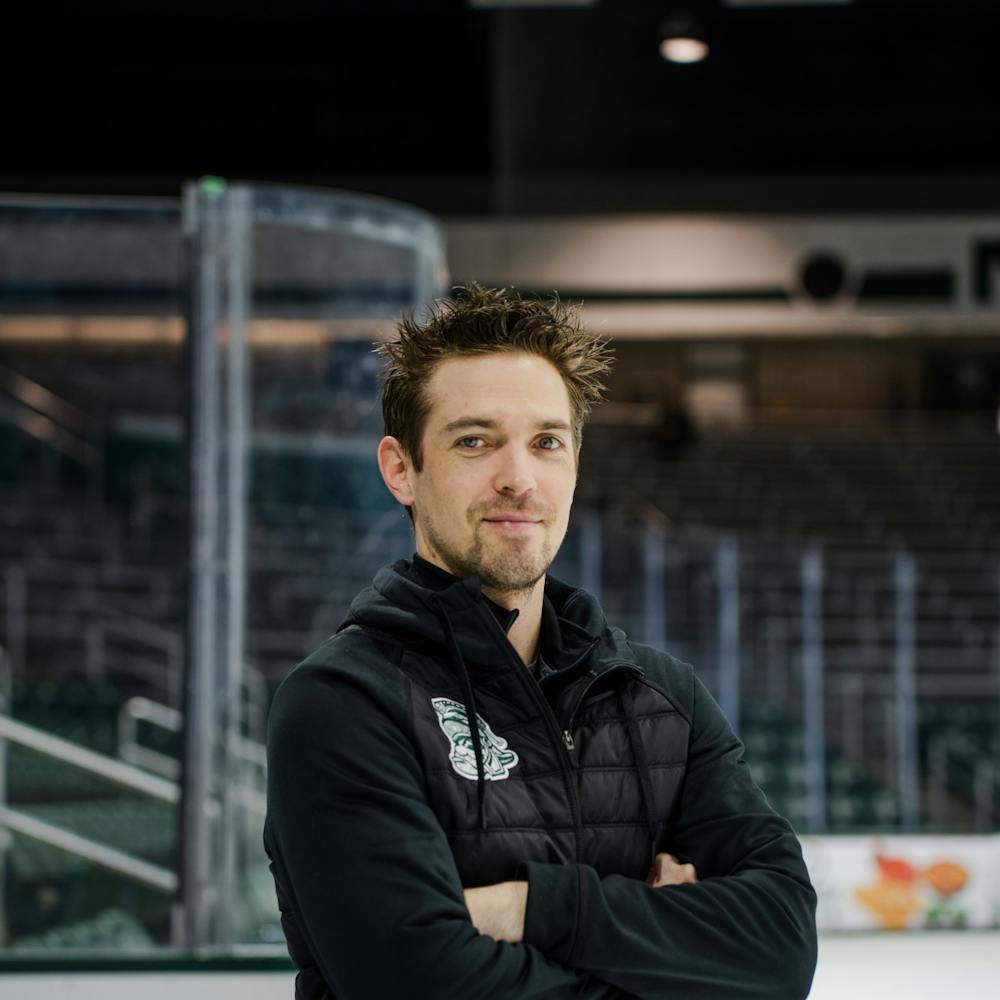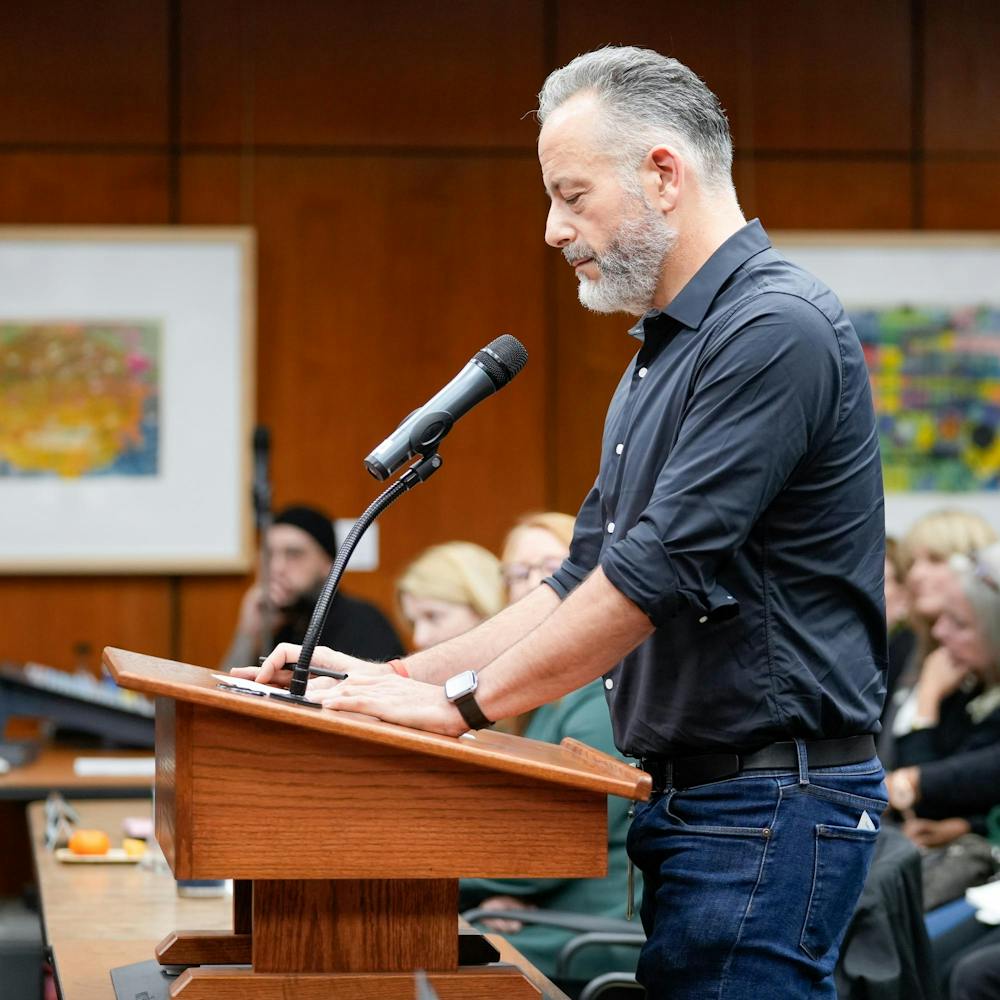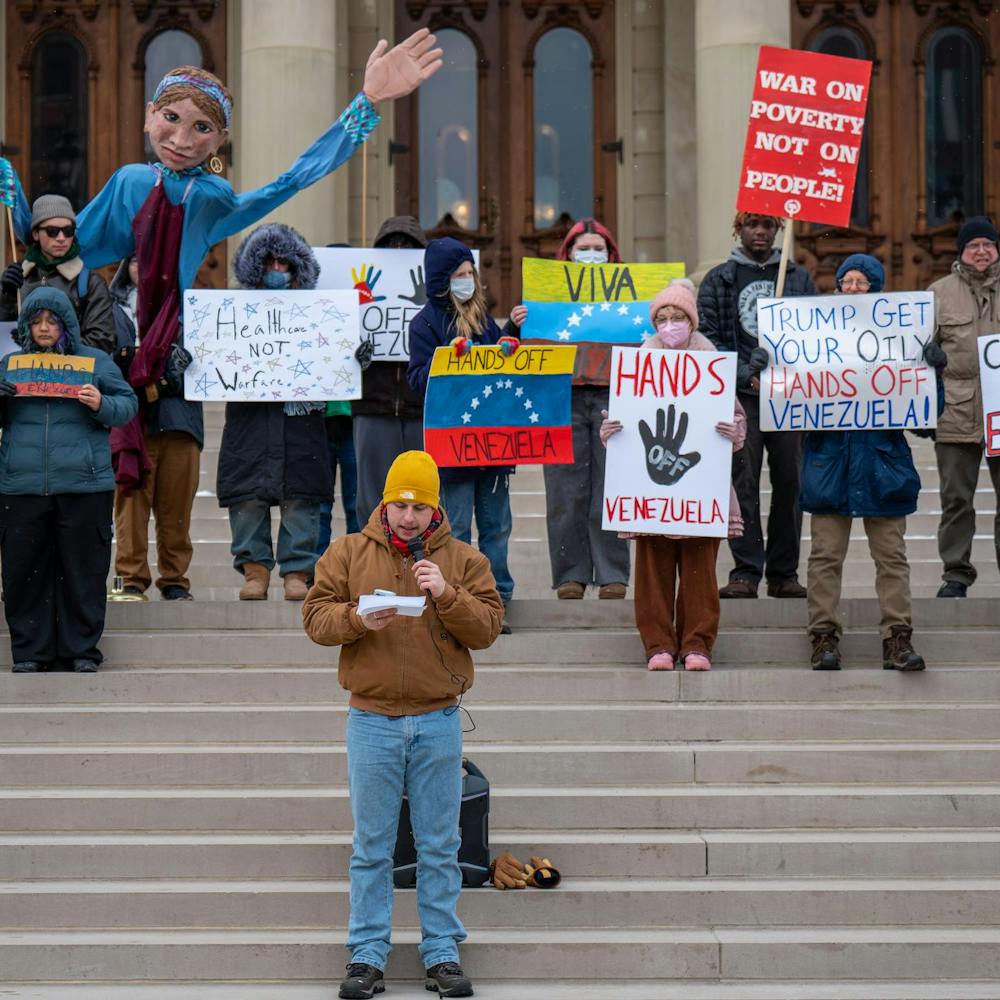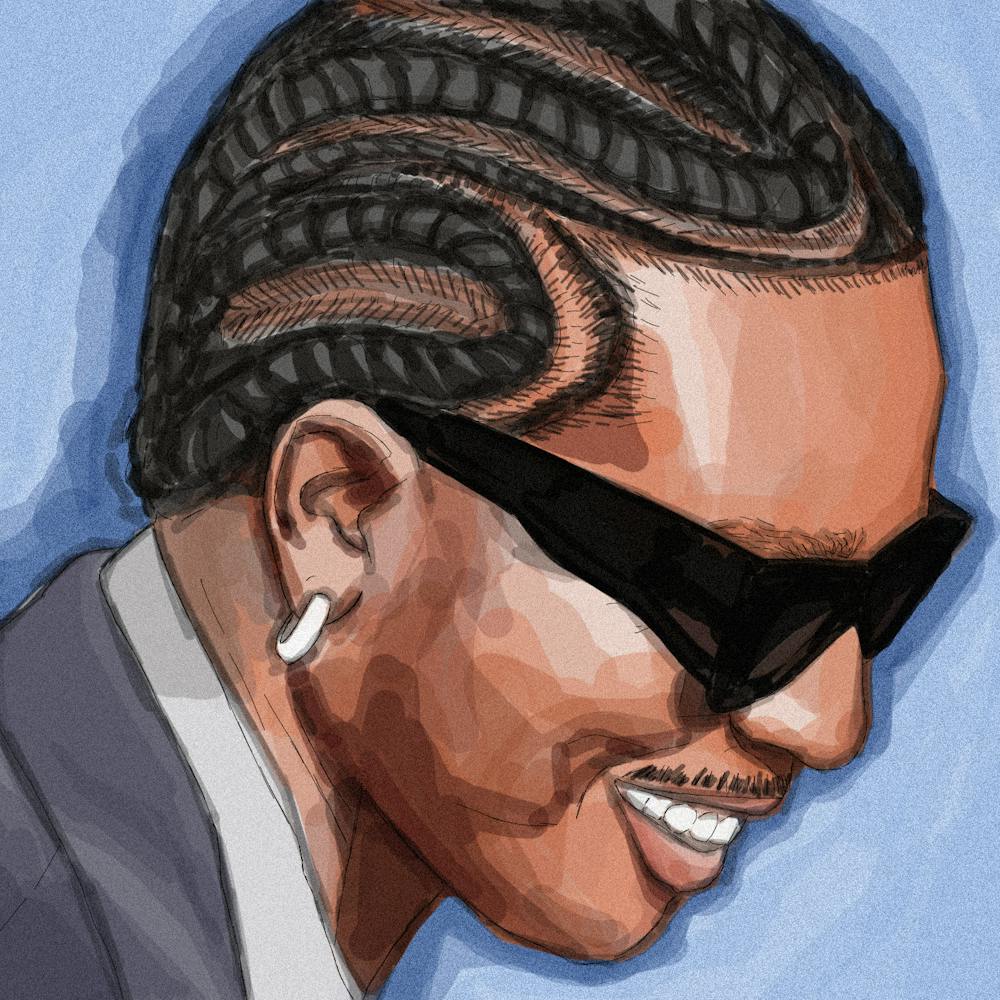Sitting on the lawn in front of her apartment, Kayla Roney smiled and held hands with her boyfriend Kris Amos as he playfully dropped grass on her leg.
As they talked about their relationship, Roney and Amos leaned close to one another to answer questions and often finished each other’s sentences.
Despite the many similarities they said make them compatible, Roney, a journalism and social relations and policy senior, and Amos, a psychology senior, could not have come from more different backgrounds.
Roney — who is Caucasian — grew up in Gaylord, Mich., a town she described as “99 percent white,” while Amos — who is black — grew up in a segregated neighborhood of Detroit.
They represent a growing trend in interracial couples as more marriages with members of different racial backgrounds were reported in the U.S. Census than ever before.
The 2000 U.S. Census served as the first opportunity for citizens to select more than one race to represent themselves, and since then, the number of multiracial citizens has shot up considerably.
The number of multiracial Michiganians increased by almost 38,000 people between 2000 and 2010 with an increase in interracial marriages serving as a major contributing factor, according to 2010 census numbers.
According to 2000 census data, the nationwide percentage of households with partners of different races or origins was only 7.4 percent, but a recent study from the Pew Research Center shows a record 14.6 percent of new marriages across the country were between spouses of different races or ethnicities.
Changing tides
After attending MSU and working at the university for more than 12 years, Paulette Granberry Russell, director of the Office for Inclusion and Intercultural Initiatives, said she has seen the perspective of race at MSU change throughout the past 30 years.
“I think we have a generation of students today whose perspective on race is very different than they were 10, 20 or 30 years ago,” she said. “It doesn’t mean they identify any less with (their given race), but they have a broader world view. And I think that’s a wonderful thing for us as a university.”
Professor in the School of Social Work Ronald E. Hall said the 1967 landmark civil rights case Loving v. Virginia, which ended legal restrictions on marriage based on race, made the biggest difference in the progress the country has seen today.
“Interracial couples 50 years ago would be insulted, if not assaulted,” Hall said. “Today (interracial couples are becoming) the norm, especially on college campuses.”
Diverse dating
Growing up in a predominantly black community in Los Angeles, MSU alumna Tiffany Gridiron Toriumi, who is black, had friends who were white, but they never talked about race for fear it would damage their friendship.
It wasn’t until she joined MSU’s Multi-Racial Unity Living Experience, or MRULE, in 1997 that Gridiron Toriumi realized being in an close friendship didn’t require being of the same race or ethnicity to understand each other’s experiences.
“As an African-American female, it’s not all of me, but it’s a big part of me,” she said. “MRULE told me it was okay to share and cry and be mad with people who may not have had those experiences but feel you on the level of your humanity.”
However, it was learning through her classes at MSU and experiences with MRULE that race was a social construction and not a biological difference that Gridiron Toriumi said changed her views on race and life forever.
“(It was) a basic truth about who I am that I really felt was denied to me,” she said. “I never got the sense that people really believed we’re one human family … because most people don’t act that way.”
When Gridiron Toriumi moved to Japan to begin a career as a jazz musician after graduating, she met Yasunori Toriumi, a local Japanese man who shared her love of music, and the two quickly fell in love and married.
It was during their first date — when he decided to introduce her to his family without telling her ahead of time — that she started to think she might have found the one.
“He told them he had an American girlfriend from California named Tiffany, and so when he introduced me, I was the last thing they were expecting to see,” she said, laughing. “His sister had a dog in her hand, and she almost dropped the dog she was so surprised. He was the only person who was not fazed.”
Support student media!
Please consider donating to The State News and help fund the future of journalism.
Roney and Amos first met working at MSU sports camps two summers ago. Despite feeling immediately attracted to one another, both were afraid to act on their feelings.
It wasn’t until they were assigned to walk around campus supervising campers in the residence halls that they finally had the chance to spend time together, and they ended up talking long after they were scheduled to clock out.
Finally Amos summoned the courage to ask Roney out on a date, and at the end of the night, he asked her to be his girlfriend.
They’ve been together for nearly a year now and talk about the likelihood of marriage regularly.
“I was talking to one of her friends and telling them, and I’m just totally accepting (of) the fact that I’m settling with her for the rest of my life,” he said. “I wouldn’t want anyone else.”
Roney said the only concerns her family ever had about her dating someone from a different race was the discrimination she would experience from others as a result, but she thinks the current rise in interracial couples and multiracial children is just the beginning of a growing trend.
“It’s hard to tell what races people are these days,” she said. “My mom always says eventually everyone is just going to be a nice café au lait color.”
Discussion
Share and discuss “Relationship over race” on social media.
